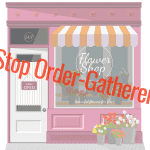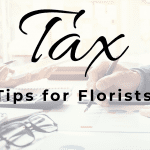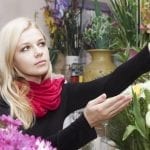 The pandemic turned millions of consumers into more regular online shoppers almost overnight. Most experts say that, even as restrictions ease and retailers reopen physical spaces, the new habits shoppers have learned over the past few months likely are here to stay. What does that mean for florists looking to attract more people online, improve user experience and convert more sales?
The pandemic turned millions of consumers into more regular online shoppers almost overnight. Most experts say that, even as restrictions ease and retailers reopen physical spaces, the new habits shoppers have learned over the past few months likely are here to stay. What does that mean for florists looking to attract more people online, improve user experience and convert more sales?
In the June issue of Floral Management, we asked some of the industry’s top website providers to review lessons learned from the crisis to create a list of strategies florists can implement this summer. Those tips include:
Prioritize SEO. “Search engine optimization has always been an important factor in helping florists market their websites,” said Katherine Kerr, Teleflora’s chief financial officer and head of eFlorist. “It drives ranking in search and is a great way to acquire new customers.” A factor that affects search ranking: florists’ business listings. “Providing consistent information in terms of shop location, categories the business operates in, and even operating hours, creates a positive signal for search engines,” Kerr explained. “For both the customer experience reviewing these listings as well as search engines, it’s important to make sure that information is accurate across the board.”
Leverage higher traffic. “In looking at our florist website traffic and sales data over the last few months, it’s obvious that there is a large influx of online buyers,” said Heath Mielke, FTD’s senior vice president of member solutions. “We’re seeing higher traffic and conversion to our sites, and even better open rates in our florist email marketing campaigns. Florists need to keep on top of their website to manage it appropriately to take advantage of the increased traffic and ultimately convert as much as possible to sales. Mobile-first sites are also more important than ever as more consumers are shopping from their phones or tablets. It is important for florists to know how the site looks on those types of devices, not just their desktop.”
Try a new feature. “It’s a great time to use some of the features on florist websites that florists may not , like photo galleries,” said Marc Grzeskowiak, BloomNet’s vice president of technology. “We also suggest starting a blog. This doesn’t have to be long but should include a photo of the cooler or special arrangement. Provide customers with a brief two-three sentence description of the flowers, colors, trends, occasion of the arrangements. Google algorithms are placing more emphasis on this type of content in ranks and it’s a great strategy to consistently add new keywords to the site that are relevant with customers.”
Stay nimble. Early in the pandemic, “Less choice and limited service did not seem to upset customers, but this is likely to change,” said Scott Heaps, the owner of GravityFree. “The quickest adapters will win. For example, when we realized how eager consumers were to send flowers as their preferred gift this Mother’s Day, it became clear shops had an opportunity to expand offerings and meet demand for customization and purchasing style. We created the ability for consumers to purchase multiple products for delivery to one location so that florists could sell more of their inventory to one customer versus checking out by setting up an order one product at a time. This level of enhanced choice and customization will increase average order value for shops who carefully curate gifts and gourmet selections.”
Keep visuals on brand. “The shift to online ordering has been happening for years — this crisis has just accelerated that movement,” said Farbod Shoraka, BloomNation’s co-founder and CEO. “Florists must realize that their new storefront is their website. The biggest mistake is not putting enough energy and attention to your online brand: mix of photos with different angles, different backgrounds, different lighting and inconsistent pricing. Online, you are not selling flowers, you are selling an image. Often, florists don’t put enough love into the images they display.”
Flaunt your expertise. “Florists are in a unique position, as they are the original ‘no-contact delivery’ business,” said Loranne Atwill, vice president and co-owner of The Flower Shop Network. “Florists can become the go-to retailer for gifts in their local markets. And offering a pickup-only option when delivery capacity is maxed out can allow a florist to keep their online storefront open throughout a holiday or busy time. As we all face the uncertainty of what the next few weeks and months will bring, florists should focus on email marketing and social media to connect with customers and position themselves to be the best choice for same-day delivery of gifts and flowers.”
Stand out from the crowd. “Showcase your design expertise, stay away from cookie-cutter designs that are susceptible to price erosion and dilution of value by competitors that offer the same product,” said Sundaram Natarajan, CEO of GotFlowers. “If the availability of fresh flowers is unpredictable, promote a ‘Designer’s Choice’ at multiple price levels and suspend the sale of other designs/products. Offer subscription services to generate repeat business while making it convenient for the customer… The new normal for retail florists is to focus more on their delivery business and less on retail and walk-in. Customers are accustomed to the convenience of food delivery services and are receptive to fees for the right convenience. Expand your delivery hours and stay in frequent communication with your customers.”
Fast-track checkout. “Gifting someone flowers is an emotive experience, but the actual process of purchasing an arrangement is typically twice as long as any other online purchase,” said Joe Vega, co-founder of Lovingly. “The user must know not only their own personal information, but also the recipient’s information in order to complete the transaction. A major headache in the checkout process is simply the amount of information required. Most floral websites have over 40 points of decision making, like form fields, checkboxes, radio buttons, information tooltips, and CTA buttons for customers to complete. An efficient website provider will require only half of that.”
Read more in the June issue of Floral Management.
Mary Westbrook is the editor in chief of Floral Management magazine.



